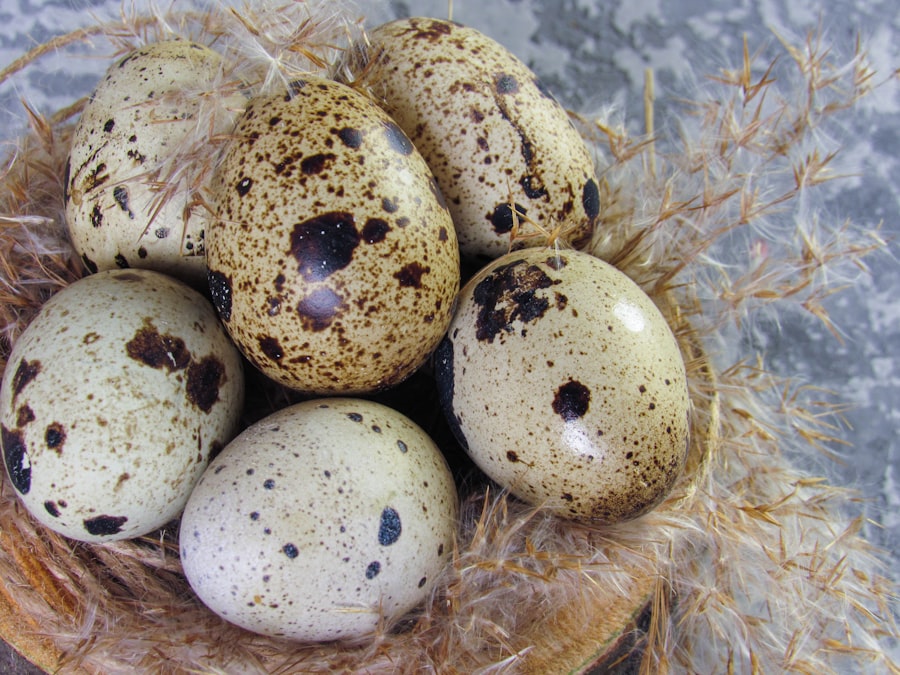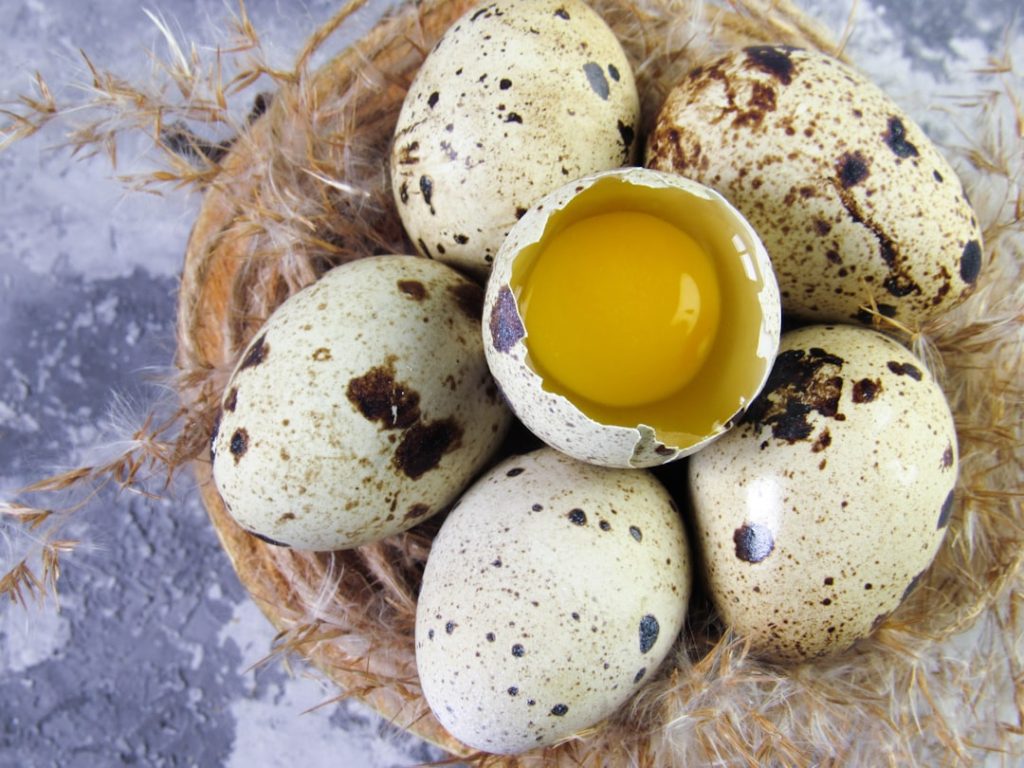Egg laying quail breeds are small, hardy birds that are known for their prolific egg production. These birds are popular among homesteaders and small-scale farmers for their ability to provide a consistent supply of small, nutritious eggs. Quail are also relatively easy to care for and can be raised in small spaces, making them an ideal choice for those with limited land or resources. There are several different breeds of quail that are specifically bred for their egg-laying abilities, each with its own unique characteristics and traits.
Quail are known for their small size, gentle nature, and low maintenance requirements, making them an attractive option for those looking to add a small flock of birds to their homestead. In addition to their egg-laying abilities, quail are also valued for their meat, which is lean and flavorful. With the right care and management, quail can provide a sustainable source of both eggs and meat for the small-scale producer. In the following sections, we will explore the characteristics and traits of egg laying quail, popular breeds, housing and care requirements, nutrition and feeding needs, breeding and incubation practices, as well as tips for raising quail for egg production.
Table of Contents
Key Takeaways
- Egg laying quail breeds are small birds that are known for their high egg production and are popular among backyard poultry enthusiasts.
- Egg laying quail are known for their docile nature, adaptability to various climates, and ability to lay eggs consistently throughout the year.
- Popular egg laying quail breeds include Coturnix quail, Bobwhite quail, and California quail, each with their own unique characteristics and egg laying capabilities.
- Housing for egg laying quail should provide adequate space, ventilation, and protection from predators, as well as a comfortable nesting area for egg laying.
- A balanced diet for egg laying quail should include a high-quality commercial feed, fresh water, and occasional treats such as fruits, vegetables, and mealworms to ensure optimal egg production and overall health.
Characteristics and Traits of Egg Laying Quail
Egg laying quail are known for their high egg production, with some breeds capable of laying up to 300 eggs per year. These birds are also known for their small size, with most breeds weighing between 4-6 ounces at maturity. Quail are generally docile and easy to handle, making them a good choice for those who are new to poultry keeping. They are also relatively quiet birds, making them well-suited for urban or suburban environments where noise may be a concern.
In addition to their egg-laying abilities, quail are also valued for their adaptability and hardiness. They are able to thrive in a variety of climates and can tolerate a wide range of temperatures. Quail are also known for their efficient feed conversion, meaning they require less feed to produce eggs compared to other poultry species. This makes them a cost-effective option for those looking to produce their own eggs at home. Overall, egg laying quail are a versatile and productive addition to any small-scale farm or homestead.
Popular Egg Laying Quail Breeds
There are several popular breeds of quail that are specifically bred for their egg-laying abilities. One of the most popular breeds is the Coturnix quail, also known as the Japanese quail. Coturnix quail are known for their high egg production, with hens capable of laying up to 300 eggs per year. They come in a variety of colors, including brown, white, and tuxedo (a mix of white and brown feathers). Coturnix quail are also valued for their fast growth rate and can be ready for processing in as little as 6-8 weeks.
Another popular breed of egg laying quail is the Bobwhite quail. Bobwhite quail are native to North America and are known for their distinctive call, which sounds like “bob-white.” While they are not as prolific layers as Coturnix quail, Bobwhite quail are valued for their flavorful meat as well as their ability to adapt to a variety of environments. They are also popular among hunters for their strong flying abilities and make a great addition to game bird preserves.
Other popular breeds of egg laying quail include the California quail, Gambel’s quail, and the Blue Scale quail. Each of these breeds has its own unique characteristics and traits, making them well-suited for different production systems and environments. Whether you are looking for high egg production, flavorful meat, or adaptability to different climates, there is a quail breed that is right for you.
Housing and Care for Egg Laying Quail
When it comes to housing and caring for egg laying quail, there are a few key considerations to keep in mind. Quail can be raised in a variety of housing systems, including cages, aviaries, or small coops. Regardless of the housing system you choose, it is important to provide adequate space for your birds to move around and access fresh air and sunlight. Quail are social birds and should be kept in groups of at least 3-4 birds to prevent loneliness and stress.
In addition to providing adequate space, it is important to provide your quail with a clean and dry environment. Regular cleaning of the coop or cage is essential to prevent the buildup of waste and reduce the risk of disease. Quail also require access to fresh water at all times, as well as a balanced diet that meets their nutritional needs. Providing a high-quality commercial feed specifically formulated for quail is recommended, along with access to grit and oyster shell for calcium supplementation.
Quail also require protection from predators, so it is important to secure their housing with wire mesh or other predator-proof materials. Providing adequate ventilation and protection from extreme temperatures is also important for the health and well-being of your birds. Overall, providing a safe and comfortable living environment is essential for the successful production of eggs from your quail flock.
Nutrition and Feeding for Egg Laying Quail
Proper nutrition is essential for the health and productivity of egg laying quail. Quail require a balanced diet that provides all the essential nutrients they need to support egg production and overall health. A high-quality commercial feed specifically formulated for quail is recommended, as it will provide the necessary protein, vitamins, and minerals needed for optimal egg production.
In addition to commercial feed, quail also require access to grit and oyster shell. Grit helps quail grind up their food in their gizzards, while oyster shell provides a source of calcium needed for strong eggshells. It is important to provide these supplements free-choice so that your birds can consume them as needed.
In addition to a balanced diet, it is important to provide your quail with access to fresh water at all times. Water is essential for egg production and overall health, so it is important to regularly check waterers to ensure they are clean and functioning properly.
Overall, providing a balanced diet that meets the nutritional needs of your quail is essential for successful egg production. By providing high-quality feed, access to grit and oyster shell, and fresh water at all times, you can help ensure the health and productivity of your egg laying quail flock.
Breeding and Incubation of Egg Laying Quail

Breeding and incubating egg laying quail is relatively straightforward and can be a rewarding experience for those looking to expand their flock or start a new generation of birds. Quail reach sexual maturity at around 6-8 weeks of age, at which point they will begin laying eggs. To encourage successful breeding, it is important to provide your birds with a balanced diet, adequate space, and access to fresh water at all times.
Once your quail begin laying eggs, you can collect them daily and store them in a cool, dry place until you are ready to set them in the incubator. Quail eggs typically take around 17-18 days to hatch, so it is important to carefully monitor temperature and humidity levels in the incubator throughout the incubation period.
When setting eggs in the incubator, it is important to position them with the pointed end facing downward. This will help the air cell in the egg remain in the proper position throughout incubation. It is also important to regularly turn the eggs during the incubation period to ensure proper development.
Once the eggs begin hatching, it is important to provide the newly hatched chicks with a warm and dry environment. A brooder with a heat lamp or heat plate can help provide the necessary warmth for the chicks during their first few weeks of life.
Overall, breeding and incubating egg laying quail can be a rewarding experience that allows you to expand your flock and continue producing eggs for your homestead or small-scale farm.
Tips for Raising Egg Laying Quail for Egg Production
Raising egg laying quail for egg production can be a rewarding experience that provides you with a sustainable source of nutritious eggs for your family or small-scale farm. To ensure success with your quail flock, there are a few key tips to keep in mind.
First, it is important to provide your quail with a clean and comfortable living environment that meets their basic needs for space, ventilation, protection from predators, and access to fresh water at all times.
Secondly, providing a balanced diet that meets the nutritional needs of your quail is essential for successful egg production. This includes providing high-quality commercial feed specifically formulated for quail, as well as access to grit and oyster shell for calcium supplementation.
Thirdly, regular monitoring of your quail flock is important to ensure their health and well-being. This includes regularly checking waterers and feeders, cleaning the coop or cage on a regular basis, and monitoring your birds for any signs of illness or distress.
Finally, providing your quail with proper breeding and incubation conditions can help ensure successful reproduction and continued egg production from your flock.
By following these tips and providing proper care and management for your egg laying quail flock, you can enjoy a consistent supply of nutritious eggs from your birds while also enjoying the many benefits of raising these small but productive birds on your homestead or small-scale farm.
If you’re interested in learning more about egg laying quail breeds, you might also want to check out this informative article on creating the perfect chicken coop and nest box setup. The article provides valuable insights into designing a comfortable and functional space for your poultry, which can be beneficial for both quail and chickens. You can read the full article here.
FAQs
What are some popular egg laying quail breeds?
Some popular egg laying quail breeds include Coturnix quail (also known as Japanese quail), Bobwhite quail, and California quail.
How many eggs can a quail lay in a year?
On average, a quail can lay between 200-300 eggs per year, depending on the breed and environmental conditions.
At what age do quail start laying eggs?
Quail typically start laying eggs at around 6-8 weeks of age, although this can vary slightly depending on the breed and individual bird.
What is the size of quail eggs?
Quail eggs are small, typically measuring about 1-1.5 inches in length and weighing around 10-12 grams.
What are the benefits of raising egg laying quail?
Raising egg laying quail can provide a sustainable source of protein-rich eggs, require minimal space and resources, and can be a rewarding hobby for many people.
Meet Walter, the feathered-friend fanatic of Florida! Nestled in the sunshine state, Walter struts through life with his feathered companions, clucking his way to happiness. With a coop that’s fancier than a five-star hotel, he’s the Don Juan of the chicken world. When he’s not teaching his hens to do the cha-cha, you’ll find him in a heated debate with his prized rooster, Sir Clucks-a-Lot. Walter’s poultry passion is no yolk; he’s the sunny-side-up guy you never knew you needed in your flock of friends!







